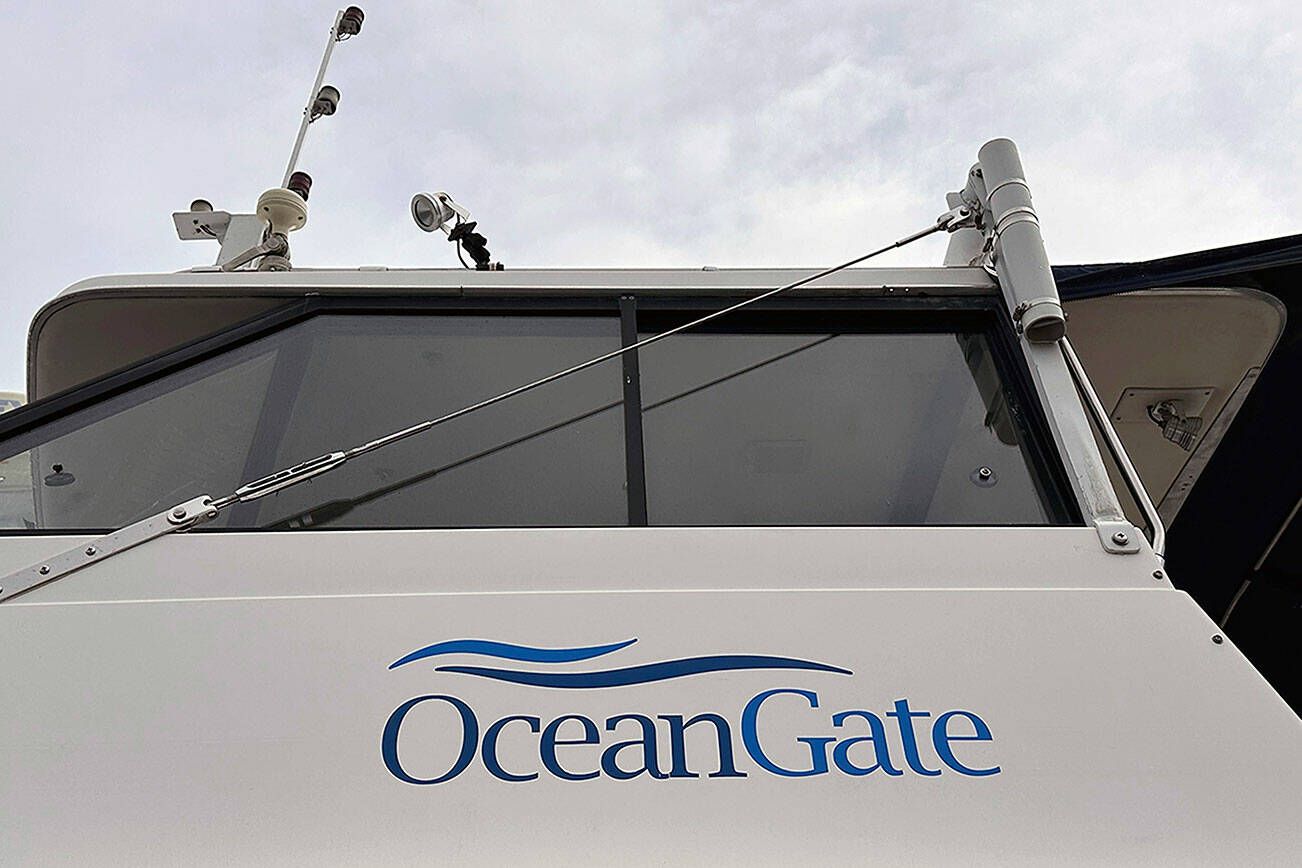Former OceanGate employee raised safety issues about missing submersible
EVERETT — A former OceanGate Expeditions employee, hired to protect the safety of submersibles and their passengers and crew, years ago claimed that OceanGate ignored warnings that the Titan, the deep sea vessel currently missing in the Atlantic Ocean, was potentially unsafe, according to a 2018 lawsuit filed in federal court.
Similar concerns, along with the claim that the company had ignored industry-wide safety standards, were echoed in a letter delivered to the Everett company that same year by the Marine Technology Society, an international trade group that promotes the advancement of marine technology.
David Lochridge, the former director of marine operations at OceanGate, argued in the complaint filed in U.S. District Court in Seattle that he was fired after he questioned the design of Titan, the submersible that is now missing near the wreckage of the Titanic with four passengers and the company’s CEO aboard.
Lochridge’s lawsuit was filed as a countersuit after OceanGate accused him of fraud, breach of contract and revealing trade secrets. Lochridge’s countersuit was settled out of court in late 2018. The terms were not disclosed.
During a meeting at the company’s Everett headquarters in January 2018, Lochridge told CEO Stockton Rush and other OceanGate executives that he disagreed with the company’s choice “to dive the submersible without any non-destructive testing to prove its integrity, and to subject passengers to potential extreme danger in an experimental submersible,” the lawsuit claimed.
As part of his job, Lochridge was tapped to complete a quality control check of the submersible.
Troubled by issues surrounding the “quality control and safety of the Titan,” and “OceanGate’s refusal to conduct critical, non-destructive testing of the experimental design of the hull,” Lochridge said the company’s stance could prove a “potential danger to passengers of the Titan as the submersible reached extreme depths,” according to court filings. OceanGate officials reportedly told him there was no equipment in existence that could perform such tests.
Lochridge reported he discovered information that the viewport — the large 7-inch acrylic viewing window at the front of the sub — was only built to a certified pressure of 1,300 meters (4,265 feet) even though the ocean exploration company intended to take passengers down to depths of 4,000 meters (13,123 feet), according to the filing.
“The viewport manufacturer would only certify to a depth of 1,300 meters due to the experimental design of the viewport,” court papers read.
“Paying passengers would not be aware, and would not be informed, of this experimental design, the lack of non-destructive testing of the hull, or that hazardous flammable materials were being used within the submersible,” the lawsuit said.
Lochridge also expressed concern that the vessel’s carbon fiber hull could be weakened by the constant pressure exerted at extreme depths, resulting in large tears in the carbon.
In response, OceanGate pointed out that Lochridge was not an engineer.
Rather than address the concerns, Lochridge claimedhe was immediately fired.
In 2016, Lochridge piloted OceanGate’s Cyclops I submersible to the wreck of the Andrea Doria, an ocean liner that sank in 1956 after colliding with another ship in fog off Nantucket Island, Massachusetts.
It is not clear whether OceanGate addressed Lochridge’s concerns. The company did not immediately respond to a request for comment Tuesday.
In a 2018 letter to OceanGate, a committee of the Marine Technology Society expressed “unanimous concern” over the development of Titan’s design, according to The New York Times.
“Our apprehension is that the current experimental approach adopted by OceanGate could result in negative outcomes (from minor to catastrophic) that would have serious consequences for everyone in the industry,” the letter stated.
The Marine Technology Society promotes marine technology and its advancement, according to its website.
The letter said the company’s “marketing material advertises that the TITAN design will meet or exceed the DNV-GL safety standards, yet it does not appear that OceanGate has the intention of following DNV-GL class rules.”
The letter concludes: “We would be grateful if you could confirm that OceanGate can see the future benefit of its investment in adhering to our industry accepted safety guidelines and protocols for ultimate success and that of the MUV (manned underwater vehicles) community. Your representation is, at minimum, misleading to the public and breaches an industry-wide professional code of conduct we all endeavor to uphold.
The paying passengers would not be aware, and would not be informed, of this experimental design, the lack of non-destructive testing of the hull, or that hazardous flammable materials were being used within the submersible.
Janice Podsada: 425-339-3097; jpodsada@heraldnet.com; Twitter: @JanicePods.
Source: The Daily Herald


